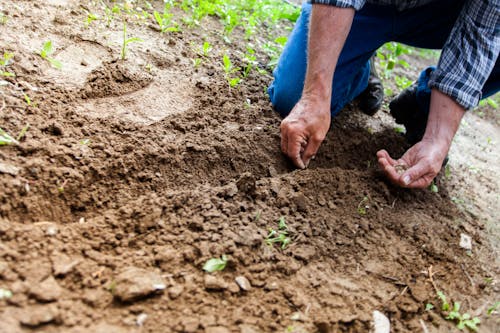The Ultimate Guide on How to Repot Plants for Thriving Growth
Introduction to Plant Repotting

Plants, much like humans, require room to grow and thrive. Repotting is a crucial aspect of plant care that ensures optimal growth and vitality. Whether you’re a seasoned gardener or a beginner plant parent, understanding the art of repotting is essential for maintaining healthy greenery in your home or garden.
Choosing the Right Time
Knowing when to repot your plants is key to their well-being. Observing the signs of stress in your plants, such as wilting leaves or stunted growth, can indicate that it’s time for a change. Additionally, considering seasonal factors can help you plan the repotting process effectively.
Selecting the Right Pot
The choice of pot plays a significant role in the success of repotting. Opt for a pot that provides ample space for the plant’s roots to spread and grow. Ensure that the pot has adequate drainage holes to avoid waterlogging, which can cause root rot.
Preparing the Plant
Before embarking on the repotting journey, it’s essential to prepare your plant adequately. Adjusting the watering schedule in the days leading up to repotting can make the process smoother. Take the time to inspect the roots and foliage for any signs of disease or pests.
Repotting Process

The repotting process itself involves several steps to ensure minimal stress on the plant. Remove the plant from its present pot, taking care not to harm the roots. Gently tease out any tangled roots before transferring the plant to its new home.
Soil Selection and Preparation
Choosing the right potting mix is crucial for providing the plant with essential nutrients and support. Different plants have varying soil preferences, so research the specific requirements of your plant species. You can also enhance the soil’s fertility by incorporating organic matter or fertilizer.
Transferring the Plant
When transferring the plant to its new pot, handle it with care to avoid unnecessary damage. Position the plant at the same depth as it was in its previous pot and fill in the gaps with fresh potting mix. To secure the plant in place, lightly push down the earth.
Post-Repotting Care
After repotting, it’s vital to provide the plant with the necessary care and attention. Adjust the watering frequency to accommodate the plant’s new environment and monitor its response closely. Consider factors such as light exposure and temperature to ensure optimal growing conditions.
Common Mistakes to Avoid
Despite your best intentions, certain pitfalls can occur during the repotting process. Avoid over-potting, which can suffocate the plant’s roots and inhibit growth. Additionally, neglecting the health of the roots can lead to long-term issues for the plant.
Monitoring and Troubleshooting

Keep a close eye on your plants post-repotting to gauge their response to the change. Healthy signs, such as new growth and vibrant foliage, indicate successful repotting. However, if issues such as transplant shock arise, take proactive measures to address them promptly.
Benefits of Proper Repotting
Proper repotting practices yield numerous benefits for plant health and vitality. From improved growth and flowering to enhanced resilience against pests and diseases, investing time and effort into repotting pays off in the long run.
DIY Repotting Tips
For the DIY enthusiast, there are plenty of creative ways to enhance the repotting experience. Experiment with homemade potting mix recipes using readily available ingredients. Additionally, consider recycling and repurposing containers to give your plants a unique touch.
Special Considerations for Different Plant Types
Different plant species have unique needs when it comes to repotting. Succulents and cacti, for example, prefer well-draining soil and shallow pots to mimic their natural habitat. Indoor houseplants may have different requirements compared to outdoor garden plants, so research accordingly.
Reviving Neglected Plants Through Repotting
If you’ve inherited a neglected plant or rescued one from less-than-ideal conditions, repotting can help breathe new life into it. Identifying signs of distress, such as root-bound growth, allows you to intervene and rehabilitate the plant effectively.
Conclusion
In conclusion, mastering the art of repotting is essential for fostering thriving growth in your plants. By understanding the timing, techniques, and considerations involved in repotting, you can ensure the long-term health and vitality of your green companions.
FAQs
1. How often should I repot my plants?
Repotting frequency varies depending on the plant species and its growth rate. As a general rule of thumb, aim to repot every 1-2 years or when the plant shows signs of outgrowing its current container.
2. Can I reuse old potting soil when repotting my plants?
While it’s possible to reuse old potting soil, it’s essential to refresh it with new nutrients and organic matter to maintain soil fertility. Consider mixing in fresh potting mix or compost before repotting.
3. Is it necessary to prune my plant before repotting?
Pruning can help manage the size and shape of your plant before repotting it, especially if it has become leggy or overgrown. However, avoid excessive pruning, as it can add additional stress to the plant during the repotting process.
4. Can I repot my plant at any time of the year?
While repotting can be done throughout the year, certain seasons may be more optimal, depending on the plant species and its growth patterns. Spring and early summer are generally recommended times for repotting, as plants are entering their active growing phase.



